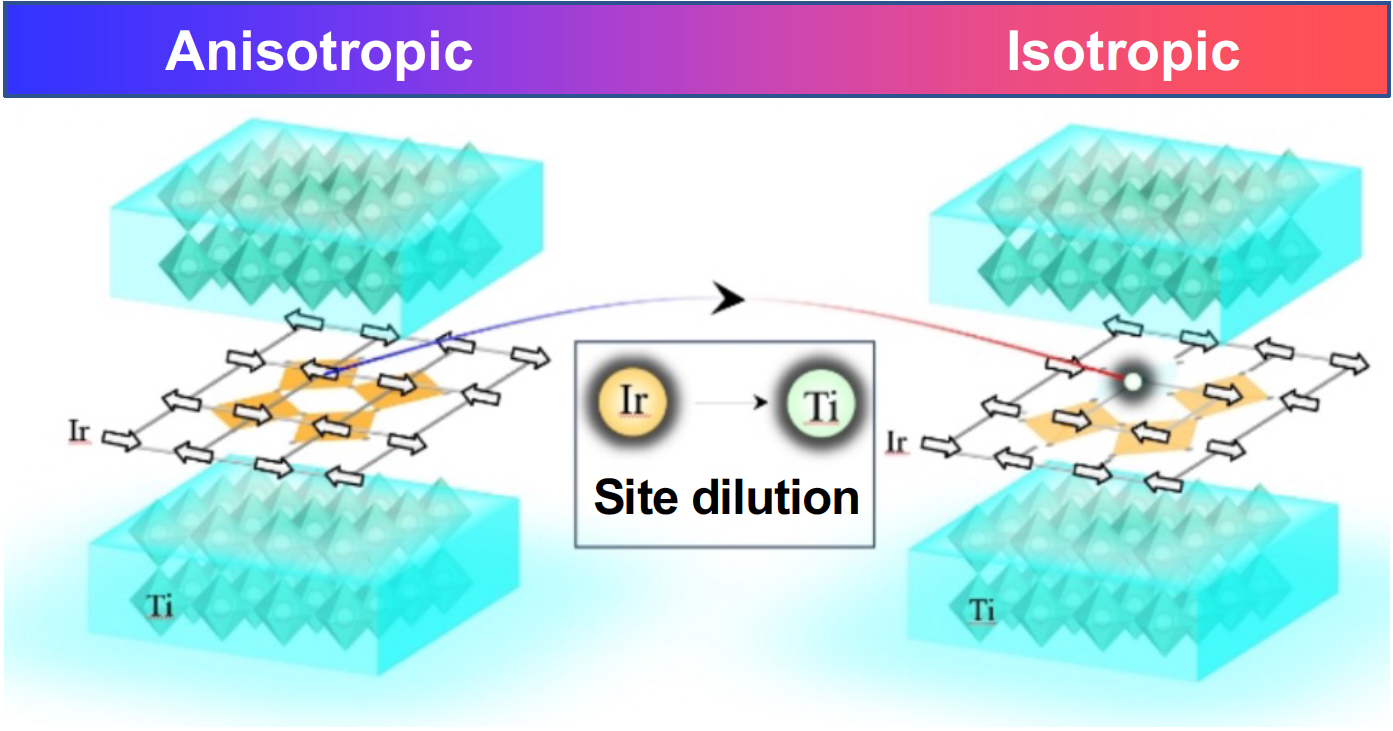DATE2023.12.14 #Press Releases
Spin dilution in antiferromagnets allows a huge magnetic field response
The finding could lead to applications in spintronics, an emerging field where electron spins are used for information processing and storage.
Dec 14, 2023
An international team of scientists, including Hidemaro Suwa from the University of Tokyo, have obtained a huge magnetic field response by lowering the density of antiferromagnetic spins.
In antiferromagnetic materials, the magnetic moment or spin of the electrons align in opposite directions. As a result, when there is no external magnetic field, the material is not magnetized (that is, it has zero net magnetic moment), which makes it difficult to manipulate the spins—a necessity for spintronics. Finding an efficient way to manipulate or tune spin fluctuations in antiferromagnetic materials is challenging.
The researchers could enhance antiferromagnetic material tunability by diluting the spins in the antiferromagnets. They used an ultrathin film of Sr3IrTi2O9 artificial antiferromagnetic crystal and introduced magnetic dilution by partially substituting Ir4+ ions (which have spins) with non-magnetic Ti4+ ions (which do not have spins). Using theoretical and experimental observations, they demonstrated how spin anisotropy could be controlled to obtain a huge magnetic field response. The huge response increases the magnetic transition temperature of the material by 600%, making it a useful material for spintronics. This is the first study to achieve the results and the finding can be applied in efficient spin manipulations in ultrafast spintronics that use antiferromagnets. 
Figure: Anisotropy control by site dilution, adapted from Nano Letters, 2023, DOI: 10.1021/acs.nanolett.3c02470.
For more details, please read the article:
Junyi Yang, Hidemaro Suwa, Derek Meyers, Han Zhang, Lukas Horak, Zhan Zhang, Evguenia Karapetrova, Jong-Woo Kim, Philip J. Ryan, Mark PM Dean, Lin Hao, and Jian Liu. 2023. Extraordinary magnetic response of an anisotropic 2D antiferromagnet via site-dilution. Nano Letters. DOI: 10.1021/acs.nanolett.3c02470


